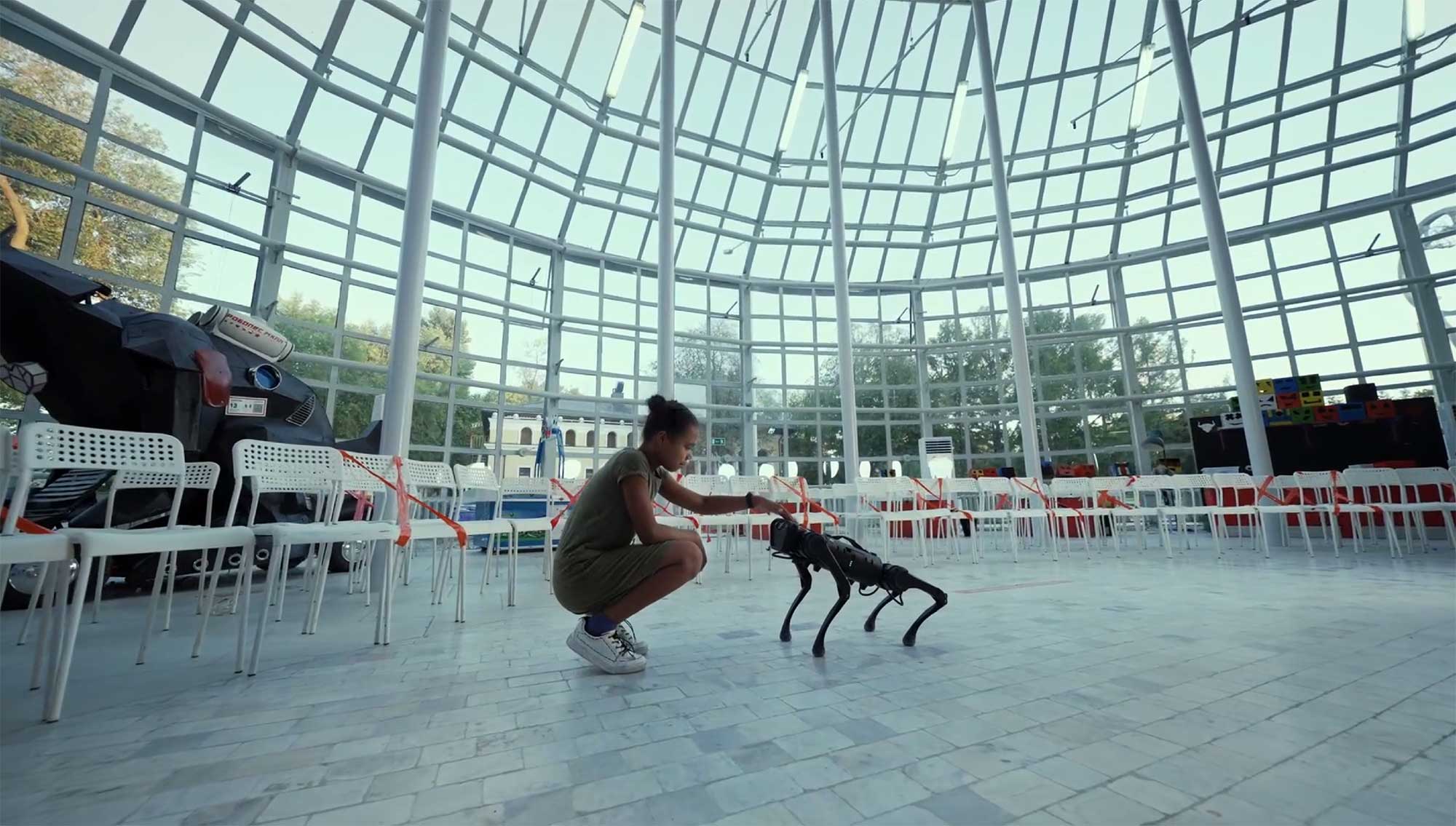Development
Spot 101 : Getting started with our robot

As a software development company, the idea of working with an advanced robot is both thrilling and terrifying. We see emerging technologies as an opportunity for growth and to offer more innovation to our clients. But, taking care of expensive and complex technology also comes with great responsibility and new fears of what could possibly go wrong (e.g. robot casually strolling into our neighbouring Lachine Canal for a swim).
When our founder, Martin Coulombe, approached me to ask if I was interested in working with Spot, the groundbreaking quadruped robot by Boston Dynamics, I was surprised! As a former designer-turned-developer, I never really expected to find myself face-to-face with a robot, let alone be able to call one my colleague. It was an opportunity I couldn’t turn down—what an amazing new adventure for not only myself and Osedea, but for our existing and potential clients.
The unboxing
It felt like Christmas day when Spot arrived at our office in Montreal. Step one was to check if we had all that we needed to get started. We had to familiarize ourselves with the robot before even thinking about operating it (the ultimate test of self-control and restraint!). To get up to speed, the vast documentation in Boston Dynamic’s Knowledge Center and the video introductions they prepared for Spot’s new owners have been helpful.
Once we felt comfortable with Spot’s basic concepts and operations, it was time to see it in action. We stood Spot up and it transformed from a lifeless test-dummy to a majestic creature. As we got more acquainted with Spot and what it was capable of, we were in awe.
Back to business
Being able to see and play with Spot is rather exciting, but it’s not all fun and games. The Spot platform is a highly capable system, ready to be adapted to any sort of job. While Boston Dynamics markets the Spot robot as an inspection tool, we believe it has potential beyond this role. As a Boston Dynamics solutions partner for Canada, Osedea will strive to find and deliver new applications with Spot that are aligned with our mission to make the world a more efficient and enjoyable place.
In order to bring Spot to our clients, we need to understand its abilities and limitations. The agile robot can be directed by an operator via a controller, which makes for a user-friendly experience. With the controller, operators can manually walk Spot and have it interact with surroundings with the help of computer vision and its complex proprietary system. Out of the box, Spot comes with obstacle avoidance and the ability to walk up and down stairs. Operators can record and playback Autowalk Missions which effectively allow Spot to walk through a route, stopping and performing actions along the way. These routes can easily be repeated, obtaining a high level of fidelity between them.
Spot’s controller also gives its operator access to other features and stats to understand and maintain the state of Spot. The robot is always evolving as Boston Dynamics adds new additions (aka payloads) and options that can be attached to Spot.
Alternatively, Spot can also be controlled directly via its API, called from an application run on a tablet, a nearby computer or even directly on a physical payload. This is where the Spot platform opens up to an endless array of possibilities.
We invite you to take a look at the Spot SDK if you’re interested!
The opportunities
Robotics, let alone hardware, isn’t a common field for a software developer to touch on. With the Spot platform, we can explore this new-to-us space while building on top of the platform to meet the needs of our clients. For instance, let’s say we have a client who requires a specialized sensor to detect a certain gas. We can work on the direct integration between the sensor and Spot. This requires a proper understanding of the payload ports that provide power, communication, time-synchronization, and safety system integration.
Working with Spot also allows us to leverage our knowledge of deep learning and further it in order to build custom solutions for our clients. Spot already uses similar technologies for its out of the box obstacle avoidance, using stairs, and to interact with objects such as picking them up, turning valves, cranks or even opening doors. Whether we use deep learning directly on Spot to analyze data it captures or after the fact, the combination of the two technologies opens up many doors for innovation.
A quick hello!
As this is my first post here on the Osedea blog, I wanted to introduce myself. My name is Robin Kurtz, and I’ve been working as a full stack developer here at Osedea since January 2017. It’s been an amazing four years up until this point, and the variety of work and challenges I’ve had the opportunity to face are extraordinary. This was solidified with the arrival of Spot, but I suspect it won’t stop here.
We look forward to sharing more about Spot with you. Stay tuned for some more technical content and, if you have any questions, contact us here!

Did this article start to give you some ideas? We’d love to work with you! Get in touch and let’s discover what we can do together.



-min.jpg)








